How Has Digital Marketing Changed Post-COVID?
April 1, 2020

The coronavirus has changed demand in multiple industries with impacts on all sectors.
The marketing landscape is constantly changing with the increase in digital channels during the coronavirus.
Nation-wide quarantine, travel restrictions, and bans on public gatherings have resulted in a completely different way of life. Almost all areas of society are impacted.
Marketers need to understand that business as usual is not part of the new 2021 plan and learn how to adapt. With more optimism and a feeling that we soon can go back to normal, marketers need to focus on how they revamp their brand.
It’s pretty simple, budget cuts, channels not performing, and even reductions in marketing teams means one thing; adapt or be trapped.
Marketing innovators will be remembered
Many brands have acted on the need to adapt to the new, post-corona, 2020.
It is essential for marketers to adapt and transform to become more effective in driving demand to keep their business alive.
Innovators and early adopters are already improving their marketing strategy and message.
These are companies, many of which are highly impacted by the effects of the coronavirus, have made creative adjustments to keep their brand relevant.
Whether it is the local bakery initiating free home delivery or IKEA launching a #stayhome campaign, these adaptations will be remembered long-term.
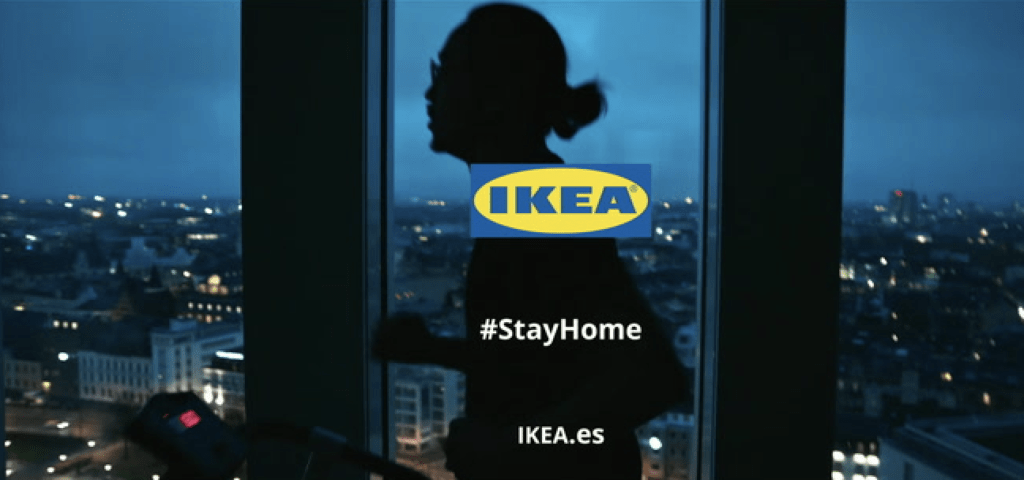
After the crisis is over – the brands who adapt early may be the ones that are remembered for stepping up.
This is without a doubt an opportunity to strengthen your brand and a chance to show empathy and take a position as supporting society in this time of struggle.
„Marks & Spencer spent most of World War II manufacturing ration clothing for the British public. No one remembers that these days, but during the heyday of M&S in the 60s and 70s it was a commonly known and widely admired fact. They were with us when the shit hit the fan, and we were with them afterwards because of it.„
Mark Ritson
There are brands currently doing this specific adaptation; helping society with their products. For example, Armani started producing medical overalls amid shortages and Louis Vuitton owner LVMH shifted their business to start making hand sanitizer.
Adapting to the new 2020
Brands need to be quick to adapt to the increase in online presence and decrease in out-of-home activity – both in marketing and in business.
This is especially true for industries where physical experiences are part of the product.
Restaurants, gyms, stores, or events will need to find innovative ways to sell their product and new ways for the product to be consumed.
Companies can also position themselves as responsible and help contain the spread of the coronavirus. Here are some brands who have started innovating ways to adapt:
SATS
Scandinavia’s largest gym enterprise, SATS, were quick to make radical changes to their physical experience-based product.
After voluntarily closing all gyms across Scandinavia, doing their part to minimizing the risk of spreading the coronavirus, SATS has moved the entire product online.
They now host live streamed gym classes, not only for SATS members, but for the public. They also launched online personal training sessions which keeps their business running.
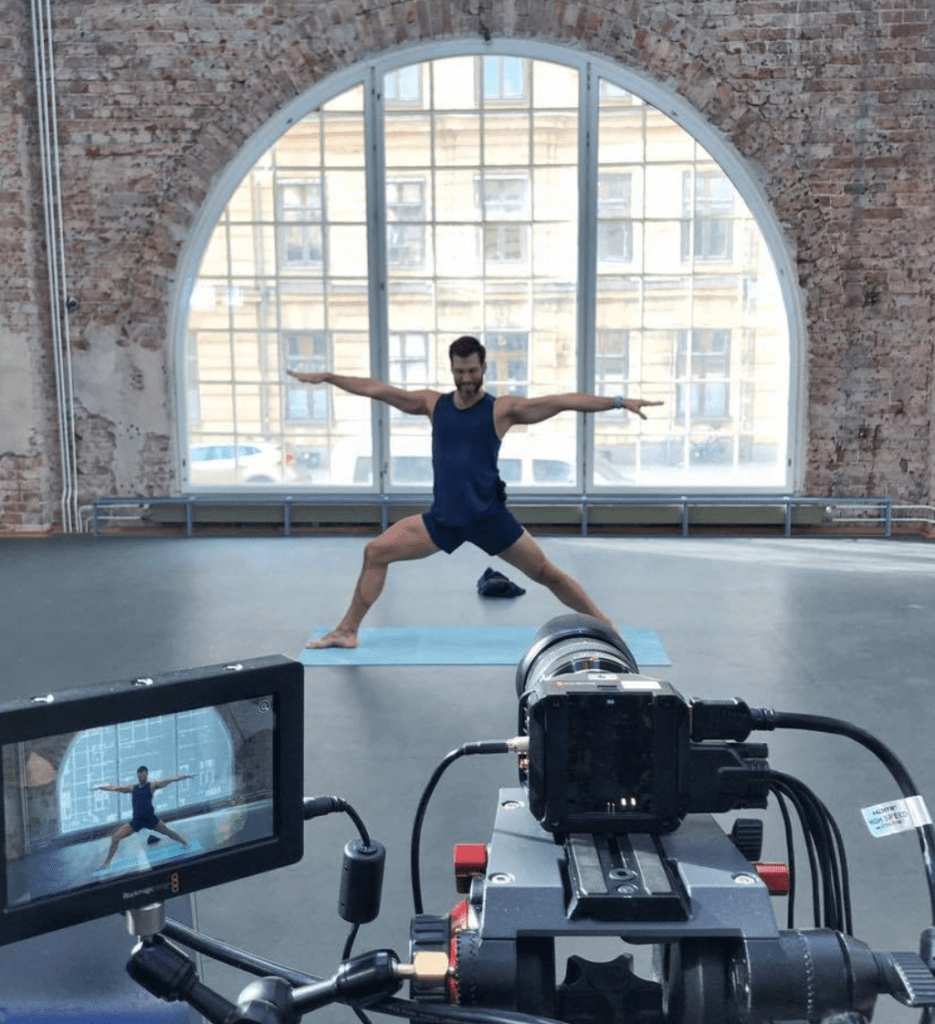
Instead of following many of their competitors, who try to keep gyms open for as long as possible, SATS took a stand early on. They were early to adapt in order to minimize the spread of the disease.
This adaptation will be remembered long after the corona crisis is over.
Qatar Airways
Though Qatar Airways is in one of the hardest impacted industries, they took a strong position early on in the crisis.
Just days after the coronavirus’ spread causing multiple countries to close their borders, Qatar Airways launched their “Travel With Confidence” campaign. The macro effects on the company and potential short-term loss didn’t hinder them from investing in the brand.

The campaign targets certain areas of concern for consumers with flight plans and sheds light on:
- Reassuring consumers with flight plans – Travelers can re-book their flights up to 3 days before departure free of charge.
- On-board hygiene – Disinfecting all aircrafts and reviewing cleaning procedures.
- Airport screening – Qatar Airways Doha hub, Hamad International Airport, screens all arrivals for symptoms of COVID-19.
Instead of cutting marketing budgets and hoping for the coronavirus to disappear, Qatar Airways took a stand early on and invested in the brand for the long-term.
Even though the initial reaction would be to save money in the uncertainty of the airline industry, the right move is to invest in the future of the brand. Not to forget – this crisis will pass too.
Cabonline: Topcab/Taxi Kurir
The Swedish taxi brands Topcab and Taxi Kurir made adjustments to their offer and digital marketing as a result of the coronavirus. As a product that may be perceived as one to be avoided in times of a virus pandemic, the two brands approached it in another way.
The ad explains that taxi is a much safer alternative to public transport and above that, set a price cap of $10 for all trips within city limits.
At the same time the message in the ad focuses on taking responsibility for your society by avoiding public transportation (which is still open in Sweden) and avoiding the spread of the virus. On top of that, to avoid physical contact, the offer is only available if the payment is made via their app.
This is a fantastic way of encouraging consumers to keep using their product but in a safe way. The clear message combined with a “society driven” offer makes a great campaign – positioning them as a responsible and relevant brand.
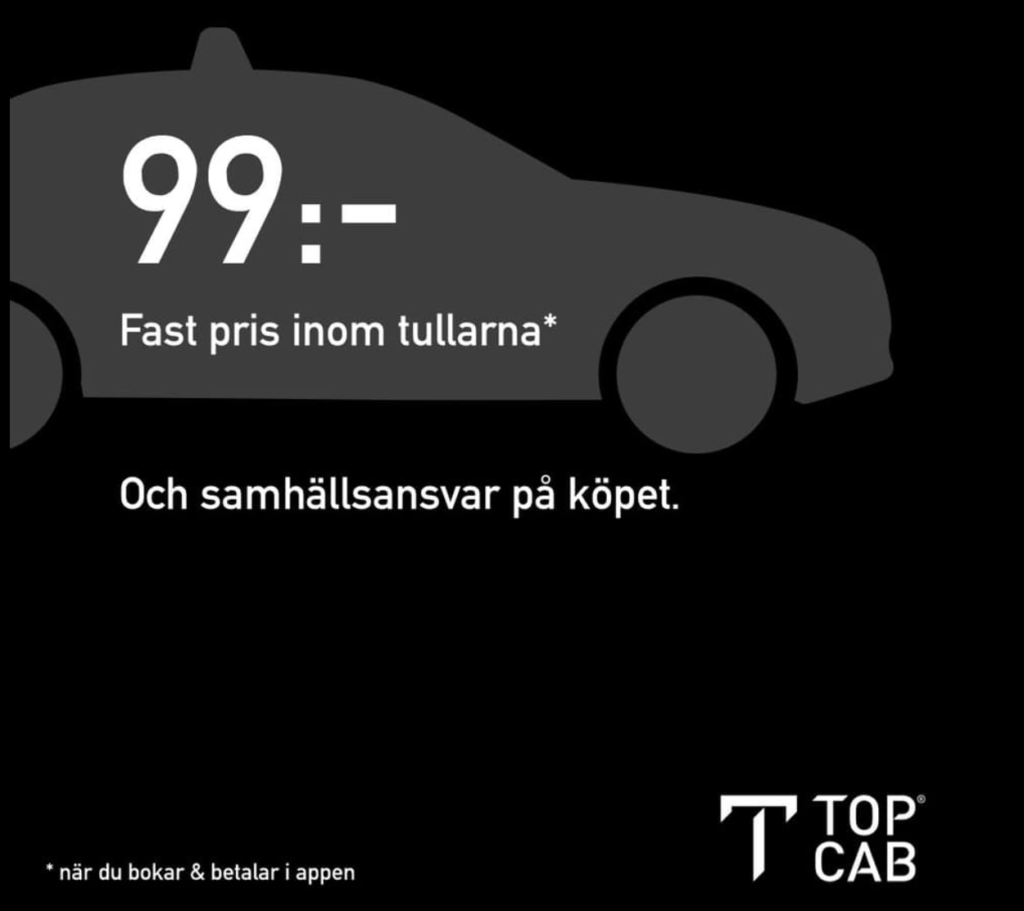
Heinz
Low-income families will be one of the groups in society hardest impacted by the economic downturn of the corona crisis.
Due to quarantine and kids staying at home from school, families need to feed kids 3 meals a day.

Heinz UK realized early that this would be a problem for many parents and joined forces with food charity Magic Breakfast. Their mission was to provide 12 million breakfasts for school children. The program is aimed at the kids that otherwise would be provided a free breakfast at school.
The main message, ‘Breakfast isn’t going anywhere’, is powerful and reassuring.
Showing empathy and support in times of crisis is what builds brands that last lifetimes – Heinz is clear proof of that.
Vodafone
Telecom giant Vodafone recently created a new campaign in the devastating aftermath of the coronavirus in Italy. Italy is one of the hardest hit countries in the world and has been in complete lockdown for several weeks.
The Italian population has become familiar with the boredom of quarantine and Vodafone was quick to empathise with that. The campaign has a strong emotional message conveying togetherness with the slogan: ‘Even when we can’t be close – we can be together.’
The campaign, which was filmed entirely from homes, has a strong ethos and at the same time targets Vodafone’s most important pillar in focus; connectivity.
Seize opportunities
Many marketers are seeing decreased revenue streams and being nervous of how to react is natural.
The initial reaction to cut marketing spend is however the wrong decision in most cases – nor is business as usual the correct road to take.
A Kantar report found that ‘going dark’ to save costs would result in a 39% reduction in total brand awareness, possibly delaying a fast recovery after the pandemic is over.
The clever marketer sees the opportunity to build their brand – perhaps even increase marketing budgets. In times of crisis, media space is cheaper than usual and gives you more bang for the buck.
Not only is this a great time to position your brand as optimistic for the future but also an opportunity to win market share for less investment.
The connection between share of voice and share of market is a proven fact. The higher share of voice will lead to higher market share. By increasing marketing investment at a time when competitors are reducing theirs will establish an advantage that could be maintained for years.
“Brand health becomes vulnerable when companies stop advertising. If they do this for longer than six months it destroys both short- and long-term health.” – Jane Ostler, Global head of media, Kantar Insights
Consolidate
The past weeks and months have been dramatic to say the least. Now that we’re getting used to the fact that the pandemic is not going anywhere for awhile, it’s time to plan for the short-term. Planning short-term is your way to ensure your brand grows long-term.
Understandably, saving costs in uncertain times may be necessary.
Consider where you can lower costs without affecting the brand or ad spend negatively, e.g. move advertising in-house using a self-service platform.
In harder hit industries such as hotels, travel, or events, where there may be staff redundancies, marketers will need to focus on getting more done by themselves which will be a challenge while simultaneously adapting to a ‘survival-mode’ marketing strategy.
Streamline the hands-on marketing operations for yourself and your team. Find solutions where you get as much free support as possible through AI, included support services, etc.
Calibrate
At the moment, uncertainty is the best way to explain the current situation. Take time to analyze what situation your company is in and where you are in the industry.
Map out what your competitors are doing and find where there is an opportunity for your brand to take a unique position.
Consumers do not expect companies to stop advertising, they do, however, expect brands to adjust their message to the situation.
A global Kantar survey with over 35,000 people found that only 8% of consumers thought brands should stop advertising with 75% saying they believe brands should be informing what they are doing in this situation.
Finding your brands’ position in the post-corona landscape will be essential for adapting and gaining market share.
Adjust your SWOT analysis to where your industry is at right now and find cost-efficient ways to stay relevant for the target audience.
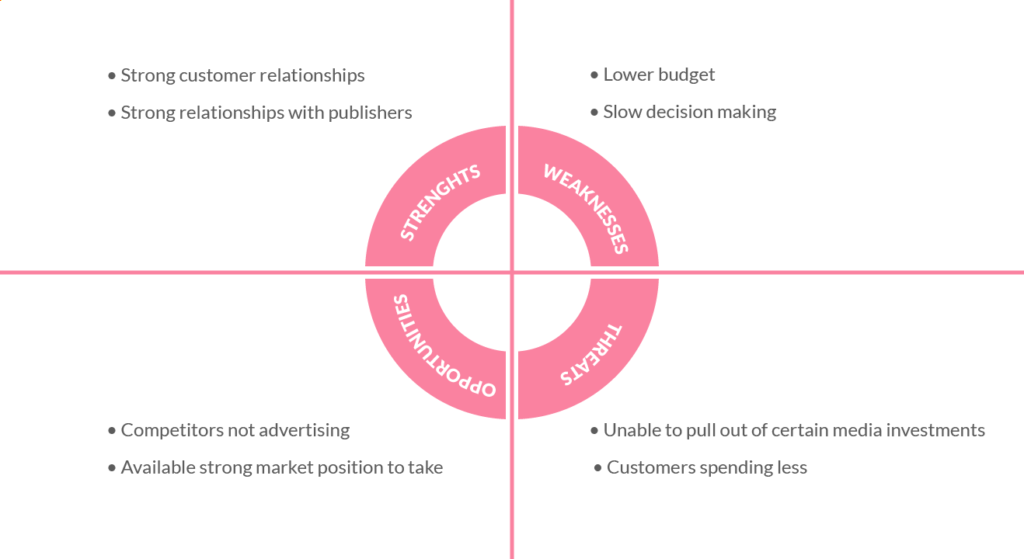
Adapt
Efficiency in advertising
In this time of crisis, cutting marketing budgets does more damage than good for the brand – this is an important time to stay top-of-mind. Be sure to instead use your marketing budget as efficiently as possible.
Look for the most cost-efficient ROI channels that are flexible and can be adjusted with ease. As more people stay at home digital channels, TV, and radio are expecting to grow. However, this is not the time to lock in a big chunk of your marketing budget in a channel that isn’t flexible.
Data-driven advertising is the best way to follow your ROI and at the same time have the flexibility to allow changes. These are changes in content, budget, and potentially even target audiences with more people staying indoors.
Adapt your content
Content is one of the primary areas that you should be reviewing when continuing your advertising to stay relevant for your customer. You may need to adjust the way you talk to your customers.
Show guidance in this time of uncertainty, be the brand to help your customers find what they need, and above all, show your customers that your brand is still around.
Research has long shown that consumers place high value on content that “informs” and “educates” them. Now that in-person encounters are limited, digital content that lets prospects learn directly about your product is more important than ever.
Educational content – brought to life with engaging, visual story-telling – is an especially useful tool right now.
Keeping brand presence
Cut costs – but do it right. Don’t remove your brand and your message from the space of the customer. Brand presence is crucial at this time and cutting ad spend for too long could have long-term consequences.
Investigate how you can adapt to work more cost efficiently in your marketing department. In-housing digital advertising is increasing in popularity and there’s no better time to do that than now.
If your marketing department lacks the resources for managing advertising in-house completely – there are self-service, easy-to-use advertising platforms.
Mainly, eliminate functions that are not essential and those that do not bring direct return on your business’ performance – but don’t let your brand lose market share along the way.
Leave a comment
Du musst angemeldet sein, um einen Kommentar abzugeben.

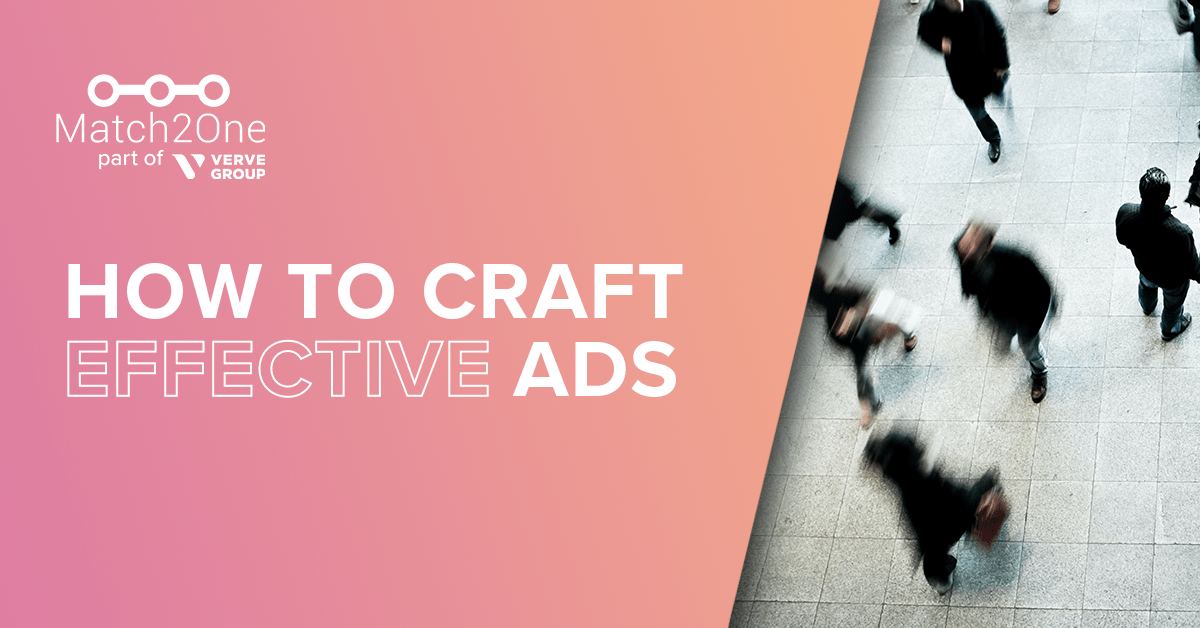
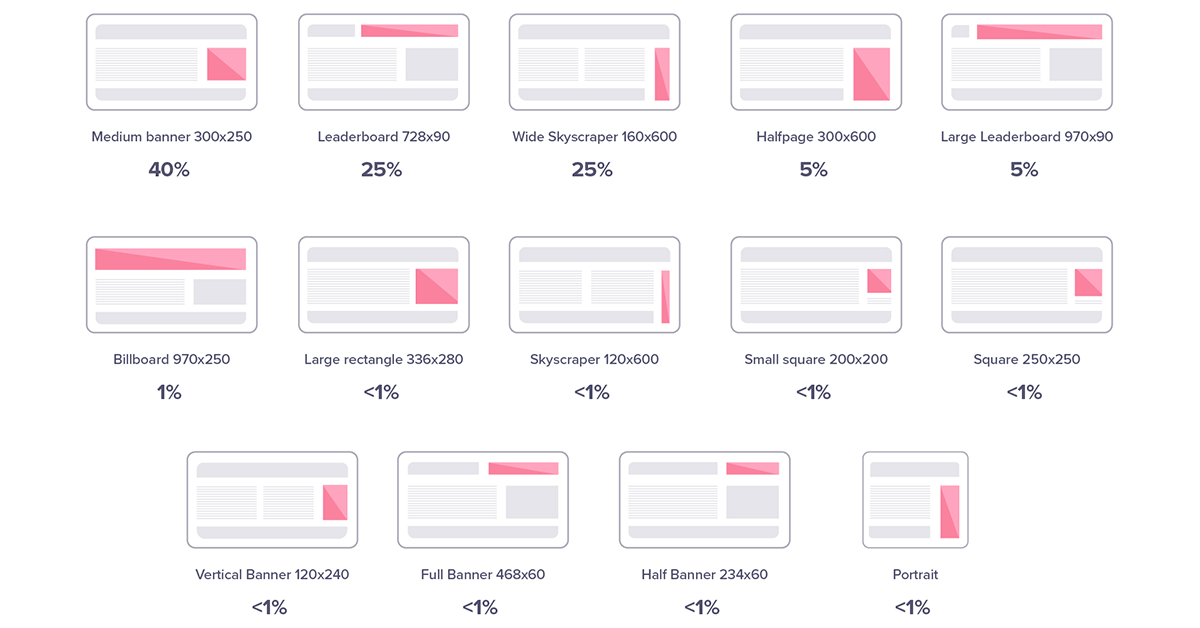
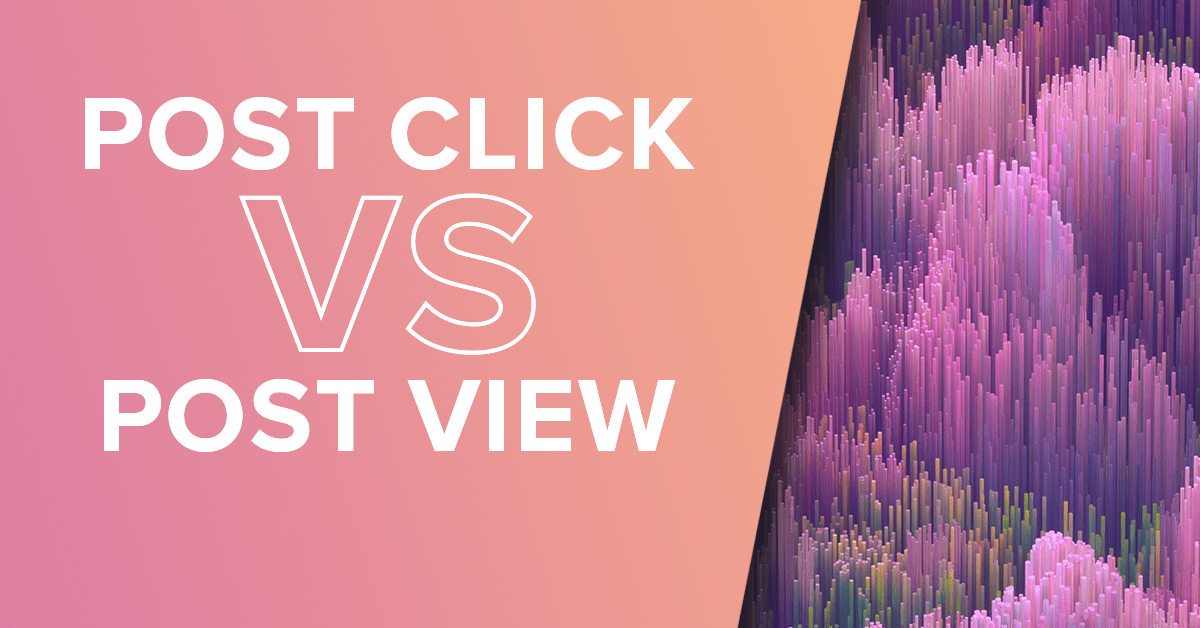
9 comments
Thank you for this article! Well Written!
I will be posting it on my Linkedin.